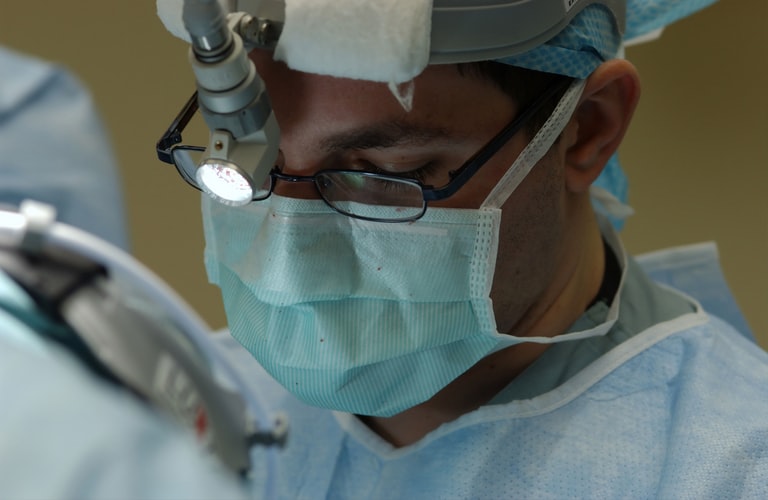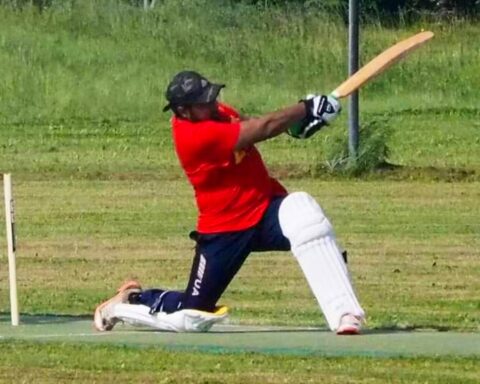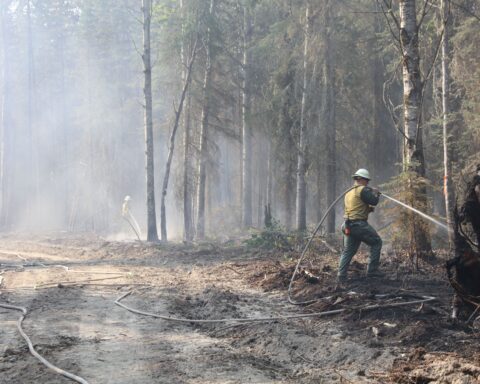At the start of 2020, Suvash Pokhrel was in danger of becoming a cliché. The 38-year-old had worked as an internal-medicine specialist in Nepal, but since becoming a Canadian permanent resident, in 2018, he hadn’t been able to practise medicine. Instead, the physician spent his days taking online courses, so he could stay abreast of developments in his field, and caring for his kids.
Costly relicensing process and legal cases
The difficulty of practising medicine in Canada as a doctor trained outside the country is well known. Pokhrel was luckier than many others in his position: he was eligible for a loan to cover the thousands of dollars needed to take his two recertification exams. But that’s just one step. The relicensing process for international medical graduates (or IMGs) involves verifying one’s medical degree and previous practical experience, passing a language-proficiency test, and completing a Canadian medical residency or practicum. According to one researcher, all this can take up to a decade to complete and, accounting for factors like textbooks, commuting, and the study time that could have been spent earning income, can cost as much as $28,000.
In Canada, there are thousands of IMGs who will never practise here. Worse still, some international graduates have had their immigration applications expedited precisely because, as doctors, they qualify for Canadian immigration streams designed for skilled workers — but now find their careers stalled. Often, the biggest barrier is securing the required residency because few spots are allocated to IMGs. Vahid Nilforushan, for example, an anesthesiologist who trained in Iran but now lives in Vancouver, said his application for a residency was denied several times between 2010 and 2016, and he eventually gave up trying to get relicensed. Around half of the roughly 1,000 doctors who immigrate to Canada every year eventually abandon their medical careers.
Canada’s IMGs and their supporting organizations have sought reforms through human rights and legal cases against this country’s provincial medical colleges, ministries of health, and various licensing bodies. The most recent of these was filed with the British Columbia Human Rights Tribunal last summer by a group of five IMGs who allege that Canadian medical bodies impose barriers to residency that prevent them from becoming licensed despite the fact that their knowledge, judgment, and skills are equivalent to those of a Canadian medical school graduate. In another case—a lawsuit filed by the Society of Canadians Studying Medicine Abroad against, among others, the College of Practising Surgeons and Physicians of BC—IMGs argue that the residency selection process discriminates against anyone who graduated from a foreign university, including those who are Canadian.
A need for doctors
Last spring, it seemed like these inveterate difficulties faced by IMGs would finally ease. The pandemic brought with it the fear that hospitals might become short staffed, and provincial governments realized they needed more hands on deck. Both B.C. and Ontario announced they would be issuing temporary licences for IMGs to practise under the supervision of other physicians. IMGs would no longer need to have completed a Canadian residency but only to have passed their Canadian medical exams or graduated from medical school in the past two years to participate.
Pokhrel looked forward to working in medicine again. “I have the skills to help, so I just want to do something,” he said. It took a pandemic to offer a glimmer of hope that professionals like him might finally be able to practise again — and fill the widening gaps in Canada’s health care system.
It should have been easy for a doctor like Pokhrel to find work in Canada. Approximately 5 million people in the country do not have a regular family doctor, and hospital wait times continue to grow. A 2018 study by the Fraser Institute found that Canada has fewer physicians per capita than comparable nations: 2.7 per 1,000 people, ranking twenty-sixth in the Organisation for Economic Co-operation and Development (OECD). (The average is 3.4.) And, even though the number of doctors has been slowly increasing over the past several years, Canada is still dotted with health deserts, where access to family physicians and specialists is slim.
Opportunities remain slim
Pokhrel expected there to be plenty of opportunities, but in order to be approved for Ontario’s thirty-day licence, there was a stipulation: applicants must have secured a position at a hospital, psychiatric facility, or Crown agency. In his enthusiasm, he rang up human resources at the Queensway Carleton Hospital and the University of Ottawa hospitals. According to Pokhrel, each facility he asked told him there weren’t any openings for IMGs and that staff shortages due to the pandemic would be filled by retired physicians and fourth-year medical students. (The University of Ottawa did not respond to a request for comment on this story, but the Queensway Carleton Hospital confirmed it did not hire physicians under the short-term licences.)
Last July, Reuters reported that Ontario had licensed only about two dozen IMGs in the past four months, a negligible sum in a province with 31,500 practising physicians. British Columbia had licensed zero.
Securing a residency
For many IMGs, the greatest obstacle to practising medicine, even in nonpandemic times, has been securing a residency through the Canadian Resident Matching Service (CaRMS). Graduates or students from Canadian medical schools and IMGs rank their preference of residencies while hospitals rank their ideal candidates. A match is made if both candidate and hospital choose each other, similar to a dating app.
This system does not give these two groups equal opportunities: for every seven residencies allocated to Canadian graduates, it gives one to IMGs (though there are fewer IMG applicants). For some specialties, competition is incredibly fierce — last year, there were 124 anesthesiologist residency positions in the country, of which only nine were designated for IMGs. None of these were in B.C., where Nilforushan currently resides. The process is designed to ensure that Canadian graduates are able to secure placements: last year, 99 per cent of Canadian medical graduates were matched.
Of the spots that did go to IMGs, the lion’s share went to doctors from Europe. CaRMS data reveals that 52 per cent of IMG applicants from European countries successfully matched with residencies in 2020 while only 15 per cent from Asia and 15 per cent from Africa matched.
This seeming favouritism also allows some candidates to bypass the residency system altogether. Family doctors and specialists licensed to work in select countries — including Australia, New Zealand, South Africa, and Singapore — can be granted provisional licences (after a training assessment) to practise medicine in Canada on the basis of their previous experience abroad. This process in turn provides a pathway to a full licence.
Declining residency spots for IMGs
Meanwhile, the already limited number of residency spots granted to IMGs has declined since 2013. According to a document by the Canadian Federation of Medical Students, “Provincial and territorial Ministries of Health determine the total number of residency positions available, the specialties in which they are available, and the proportion open to CMGs [Canadian medical graduates] versus IMGs.” But attempting to understand how exactly quotas are calculated each year in B.C., for example, proved to be Kafkaesque. Starting from the College of Physicians and Surgeons of BC, I was redirected to CaRMS and the University of British Columbia, then to the Association of Faculties of Medicine of Canada, and finally to BC’s Ministry of Health.
Stephen May, a senior public affairs officer with the ministry, stated that, when it comes to IMGs, “B.C. has supported and implemented a number of revisions to reduce barriers over recent years.” He referred to the UBC medical program significantly increasing its number of IMG residency seats, from six to 58, as an example. (In contrast, Canadian and American medical graduates in B.C. have access to 288 residency seats.) But there still wasn’t any clear answer on how the allocation for Canadian graduates versus IMGs is determined.
Canada lags behind
If the first two decades of the twenty-first century have taught us anything, it’s that the coronavirus won’t be the last infectious outbreak in our lifetimes. Between SARS, MERS, Ebola, H1N1, and SARS-CoV-2, there is a clear epidemiological trend emerging. Whether the next global pandemic arises from an Asian wet market or a Midwestern industrial feedlot, zoonotic diseases will require careful monitoring, containment measures, and preparation for the decades ahead. When it comes to having adequate staffing reserves—and, in particular, tapping the country’s pool of internationally trained doctors—Canada has lagged behind other Western countries during the pandemic.
According to a paper published by the University of Calgary’s Robert Falconer, the UK health secretary promised to try to advance the qualification of refugee health care professionals. Meanwhile, the Irish Medical Council has turned to its medically trained refugees and asylum seekers for support during the pandemic. In the early stages of COVID-19, New York state issued directives allowing foreign-trained doctors to provide patient care.
Licensing more IMGs could address Canada’s chronic doctor shortages as well as its aging physician population. (By 2026, 20 per cent of Canada’s doctors will be 65 or older, according to the Canadian Medical Association.) This policy move could also be key to better serving the country’s diverse population. One study found that patients with a chronic disease and limited English were more likely to return to the emergency room or be readmitted to a hospital because discharge instructions were unclear. While medical graduates are certainly diverse, second-generation Canadians are less likely to speak as many languages as their first-generation counterparts.
Change is possible
Despite the many problems, Canada’s health care system has shown that changing how it integrates IMGs is possible. An alternative pathway to licensing, called the Practice Ready Assessment, is becoming an increasingly popular means for foreign doctors to relaunch their careers. PRAs make it possible to bypass the residency bottleneck by allowing physicians (particularly family doctors) who have completed their residencies and practised independently abroad to be tested through a supervised three-month assessment. If a candidate is successful, they are assigned to work in an under-serviced rural area via a two-to four-year “return of service” contract. The program is now offered by seven provinces. Saskatchewan’s PRA program is a significant source of physicians to its farming communities. Today, approximately 50 per cent of the province’s licensed doctors are IMGs. Expanding the PRA program to all provinces, especially Ontario, could be game changing.
Any recommendation that is serious about minimizing the so-called brain waste of Canada’s IMGs will also require changes to our two-tier residency system. For experts like Falconer, who has written and spoken extensively on the issue, a substantive fix to the current system would be increasing the number of residency spots in the IMG pool to match the number offered to Canadian graduates.
“We should just make them equal at 3,000 seats each,” he said. It’s a bold recommendation that could affect several parts of our health care system. But it could catapult Canada’s ratio of doctors per capita to being on par with leading OECD countries.
There is already existing capacity to boost IMG residency seats from approximately 400 to 3,000 per year. Each year, Canadian hospitals allocate a number of additional spots to trainees from Saudi Arabia, whose government pays for their residencies. (In 2018, approximately 1,000 positions were allotted to this program.) It’s a significant side-hustle for our hospitals that rakes in about $100 million per year. But training doctors from Saudi Arabia—versus our own IMGs—provides Canada’s wider public no long-term benefit given that those trainees return home after completing their residencies.
Acting now could be crucial: Canada isn’t guaranteed to remain a coveted destination for IMGs. Recently, the UK government introduced a new pathway to licensing for IMGs who have passed their Canadian medical exams. Pokhrel is exploring this new UK pathway; he’s also studying for his US exams. “The system here is unwelcoming,” he said. “We have fulfilled all the criteria, so why are there barriers to recruiting us into the field?”
This article was produced in collaboration with The Walrus.
Jagagdeesh Mann is a Vancouver-based entrepreneur and a founding partner of the Asian Pacific Post, a Jack Webster Award–winning publication. His work has been published by the Toronto Star, the Georgia Straight, the Globe and Mail, the CBC, and Canadaland.




